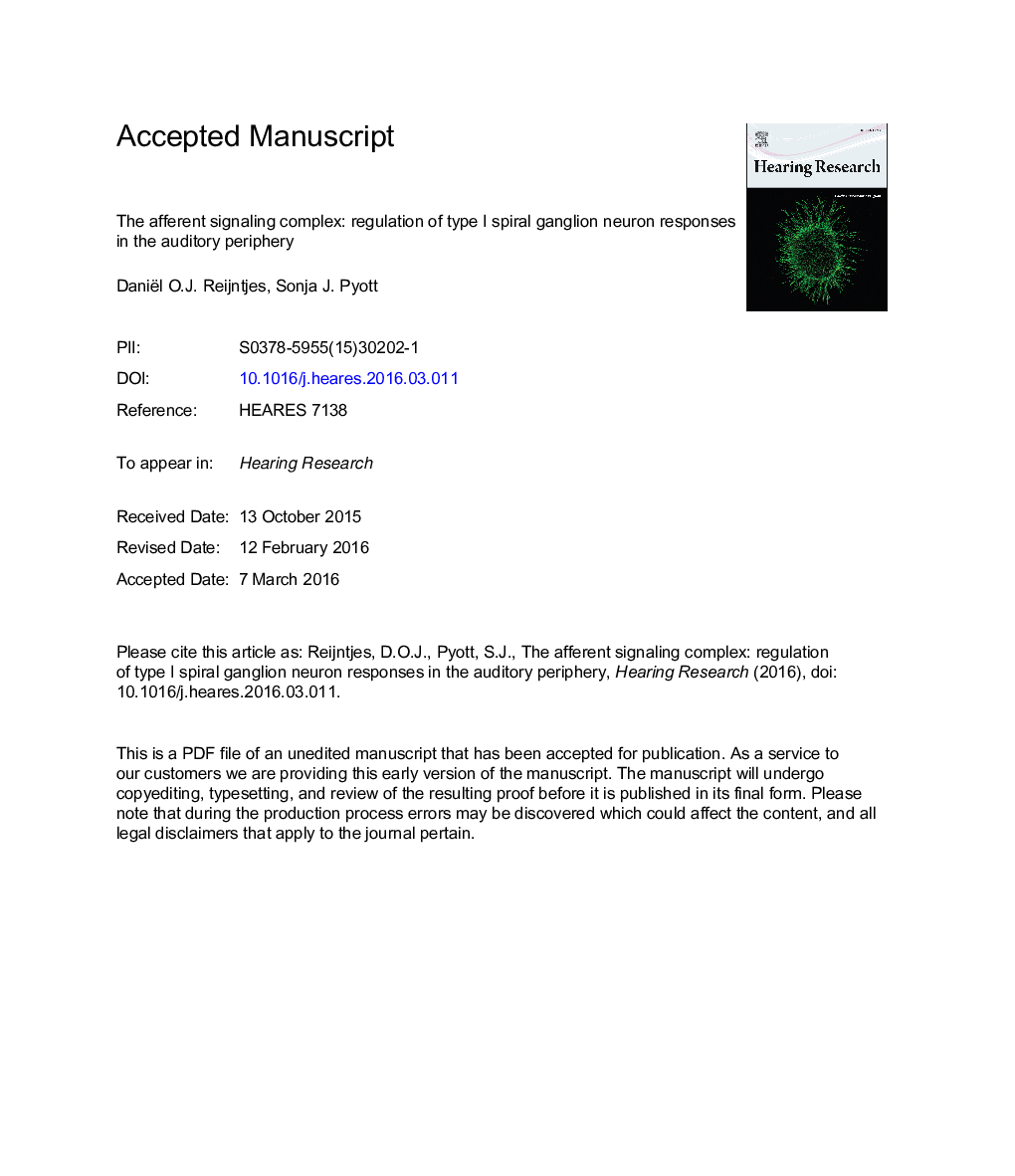| Article ID | Journal | Published Year | Pages | File Type |
|---|---|---|---|---|
| 6287107 | Hearing Research | 2016 | 48 Pages |
Abstract
The spiral ganglion neurons (SGNs) are the first action potential generating neurons in the auditory pathway. The type I SGNs contact the sensory inner hair cells via their peripheral dendrites and relay auditory information to the brainstem via their central axon fibers. Individual afferent fibers show differences in response properties that are essential for normal hearing. The mechanisms that give rise to the heterogeneity of afferent responses are very poorly understood but are likely already in place at the peripheral dendrites where synapses are formed and action potentials are generated. To identify these molecular mechanisms, this review synthesizes a variety of literature and comprehensively outlines the cellular and molecular components positioned to regulate SGN afferent dendrite excitability, especially following glutamate release. These components include 1) proteins of the SGN postsynapses and neighboring supporting cells that together shape glutamatergic signaling, 2) the ion channels and transporters that determine the intrinsic excitability of the SGN afferent dendrites, and 3) the neurotransmitter receptors that extrinsically modify this excitability via synaptic input from the lateral olivocochlear efferents. This cellular and molecular machinery, together with presynaptic specializations of the inner hair cells, can be collectively referred to as the type I afferent signaling complex. As this review underscores, interactions of this signaling complex determine excitability of the SGN afferent dendrites and the afferent fiber responses. Moreover, this complex establishes the environmental milieu critical for the development and maintenance of the SGN afferent dendrites and synapses. Motivated by these important functions, this review also indicates areas of future research to elucidate the contributions of the afferent signaling complex to both normal hearing and also hearing loss.
Keywords
NMDARmAChRmGluRnAChRGPCRAMPAABREAATLSOPSPGluRTTXN-methyl-d-aspartateMPTPNMDANIHLGLASTNKACLCLateral olivocochlear efferentsPSDDTXPKCAChROHCNSFVGCCISCSGN1-methyl-4-phenyl-1,2,3,6-tetrahydropyridineCl− ChannelEPSCEPSPNa+,K+-ATPaseAChAcetylcholineα-amino-3-hydroxy-5-methyl-4-isoxazolepropionic acidγ-aminobutyric acidnoise-induced hearing losslong term depressionPickIHCTetraethylammoniumtetrodotoxinpostsynaptic densityexcitatory postsynaptic currentCochleaglutamate aspartate transporterexcitatory amino acid transporterCNSDendrotoxinDopaminelateral superior oliveouter hair cellInner hair cellinner hair cellscentral nervous systemN-ethylmaleimide-sensitive factorLTDspiral ganglion neuronVoltage gated potassium channelauditory brainstem responseCompound Action Potentialaction potentialPostsynaptic potentialsexcitatory postsynaptic potentialglutamate receptor interacting proteinProtein kinase CTEAKarHCN channelKv channelhyperpolarization-activated cyclic nucleotide-gated channelCaPGABAGABARGRIPGluglutamateGABA receptorN-methyl-d-aspartate receptormuscarinic acetylcholine receptornicotinic acetylcholine receptorAcetylcholine receptorsNeurotransmitter receptorsKainate receptorMetabotropic glutamate receptorGlutamate receptorG protein-coupled receptor
Related Topics
Life Sciences
Neuroscience
Sensory Systems
Authors
Daniël O.J. Reijntjes, Sonja J. Pyott,
